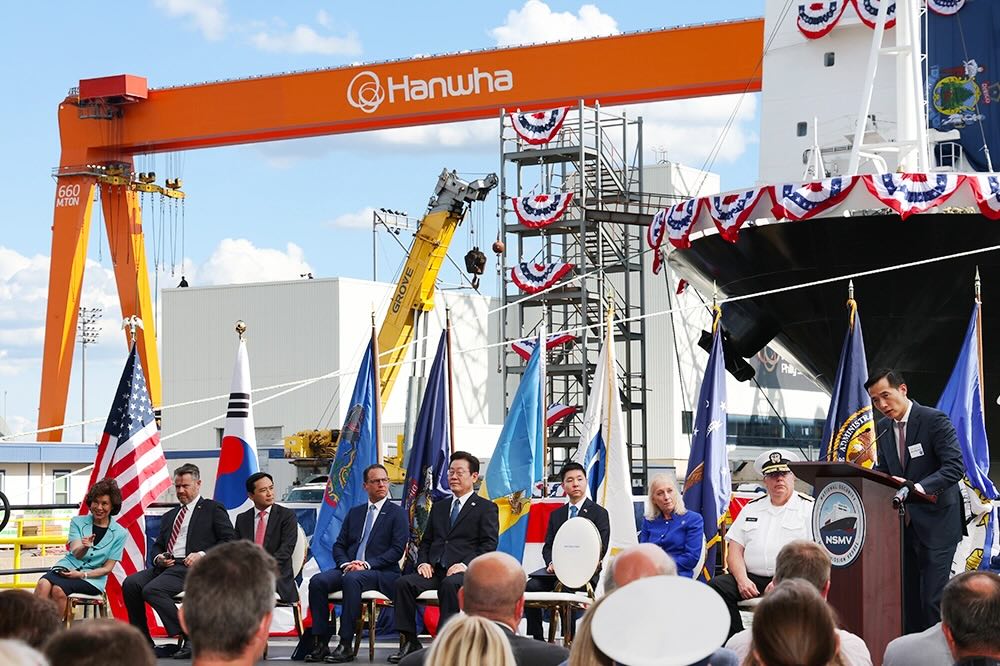Splash Wrap: Koreans bankroll America’s rusting docks
Korea Invests $150 Billion to Revitalize U.S. Shipbuilding

In a significant move to bolster U.S. shipbuilding, the South Korean delegation announced a staggering $150 billion investment during a trade summit with former President Donald Trump at the White House. Highlighting this commitment, Korean President Lee Jae Myung presented Trump with a model of an ancient Korean battleship alongside a customized gold putter. The centerpiece of this initiative is the ambitious $5 billion expansion plan for Hanwha Ocean at Philly Shipyard.
Major Investments and Ambitious Plans
The South Korean shipbuilding industry is making bold strides in the U.S. market, spearheaded by Hanwha Ocean’s expansion plans at Philly Shipyard. This week, Hanwha unveiled a $5 billion initiative that aims to significantly ramp up production at the Philadelphia facility. Currently producing fewer than two vessels annually, the plan is set to increase output to 20 vessels per year over the next decade. This expansion is part of Korea’s larger strategy, branded under the slogan “Make America Shipbuilding Great Again,” which aims to revitalize the industry and create jobs in the U.S.
Additionally, Samsung Heavy Industries has partnered with Oregon-based Vigor Marine to enhance repair yards and expand naval maintenance, repair, and operations (MRO) capacity on the West Coast. Meanwhile, HD Hyundai introduced a $2 billion joint investment fund in collaboration with U.S. private equity firm Cerberus, focusing on financing new naval and offshore construction projects. These investments signal a robust commitment from South Korea to not only strengthen its shipbuilding capabilities but also to create a sustainable partnership in the U.S. maritime sector.
Challenges Ahead in Shipbuilding Revival
Despite these ambitious plans, the path to revitalizing U.S. shipbuilding faces significant hurdles. Key challenges include outdated facilities, a shortage of skilled labor, and the restrictions imposed by the Jones Act, which complicate domestic shipbuilding efforts. Industry executives from Korea acknowledge that it may take years to train a local workforce capable of meeting the demands of modern shipbuilding and to scale up production effectively.
Moreover, the supply chain issues prevalent across the industry further complicate efforts to achieve mass production levels necessary for the envisioned growth. As these companies navigate these obstacles, the focus remains on establishing a strong operational foundation that can support increased shipbuilding activity over the coming years. The outcomes of these initiatives will not only impact the shipbuilding landscape but also play a crucial role in the broader context of U.S.-Korea trade relations.
